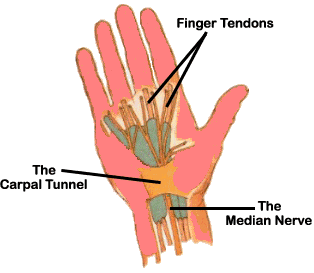Blog
Proper use of hand tools & RSI
Proper Use of Hand Tools Can Save You from RSI

As a user of hand tools, you will agree that your hands are your greatest assets and tools. To be able to continue to work with your hands, you will want to protect your hands from RSI or Repetitive Strain Injuries. The best way to do that is to use proper body mechanics and use the proper tools for the job at hand. Although you can use your hands for doing some of the work, use of proper hand tools can really reduce the amount of strain from your hands.
The Risk from RSI
Just stop awhile and consider that for each pound of pressure you are applying while working with your hands, ten pounds of pressure actually acts against your carpometacarpal joint (wrist). Therefore, it is no wonder that it is so easy to injure yourself. When you apply constant pressure on the handle of a tool during work, it could easily lead to sensitivity loss in your finders or hand, which can make it difficult to work effectively. That makes it very important that you select tools designed to be comfortable during use.
The Use of Hand Tools
Your hand is your major tool and all hand tools are only meant to assist you rather than replace your hand. This is one golden rule that can save you from a lot of injuries. For example, when working on small objects, rather than using one of your hands to hold it, it is easier and safer if the object was held in a bench-vice. Not only does that leave you with both hands to put to work, the job itself is completed in less time and with greater accuracy.
Many small hand tools are multipurpose. That means you can use them for many types of activities. One example is the Combination Pliers. This tool can grip objects of different sizes with equal ease. The cutting edges are good for cutting soft metal wires. However, if you were to attempt to cut hard metal wires, you may end up damaging the tool as well as injuring yourself. One of the basic rules while using tools is to use the tool wisely and only for the type of job it was originally designed for.
Finding Effective Hand Tools
When working with tools it is important to maintain proper body posture. Tools extend the power of your hand, and this extra power can be as detrimental as it can be useful. For example, when hammering a nail, position your body such that the blows from the hammer cannot cause you injury. While hammering, it may be simpler to hold the nail between a finger and a thumb, but it is equally probable that the hammer falls on your thumb rather than on the nail. Therefore, it is advisable to hold the nail with a pair of long-nosed pliers.
Finding effective hand tools is an art that comes mostly from long practice. Take advice from veterans when purchasing hand tools. Look up the manufacturer's instructions when using power tools. These are much more powerful compared to non-powered hand tools and can cause extensive damage if used without due care.
Practice Makes Perfect
Hand tools, when you first start to use them, will never feel natural. Therefore, it is very important to learn how to use them properly and then practice using them until you get used to the feel of the tool in your hand.
Unless you have used a tool yourself, you will never know how well it works. A cutting tool, for example a wood-chisel can make a deep or a shallow cut depending on how much pressure you are applying on it. Only practice with the chisel will tell you how much pressure is enough.

